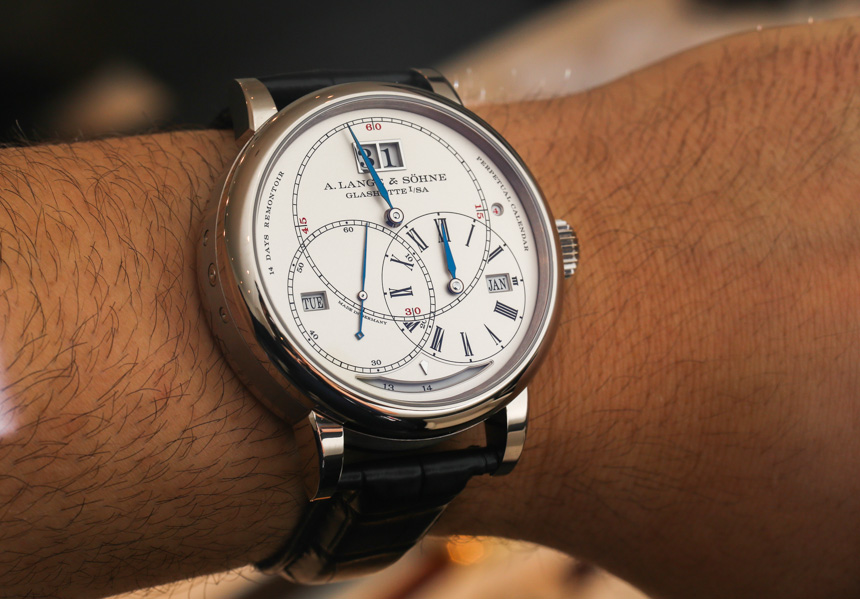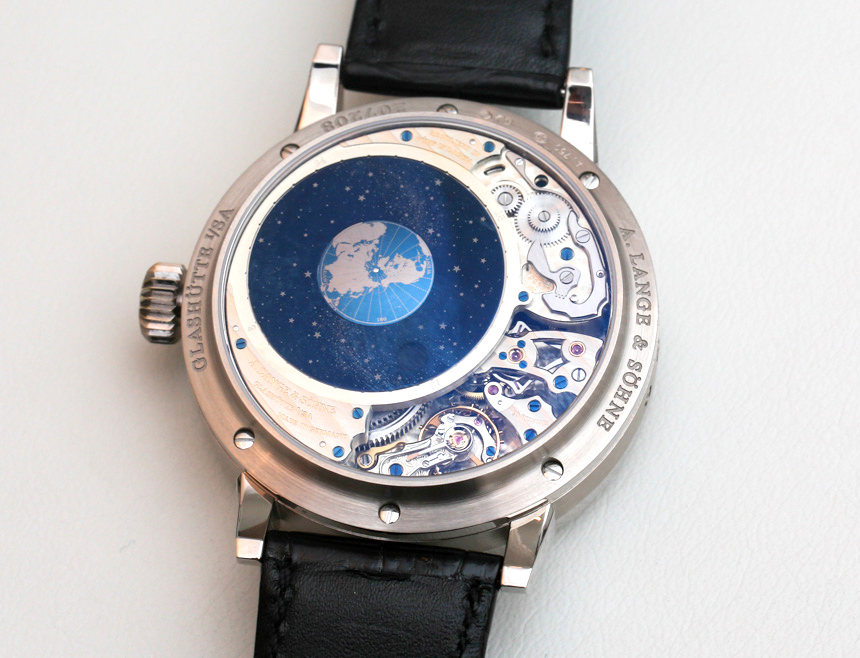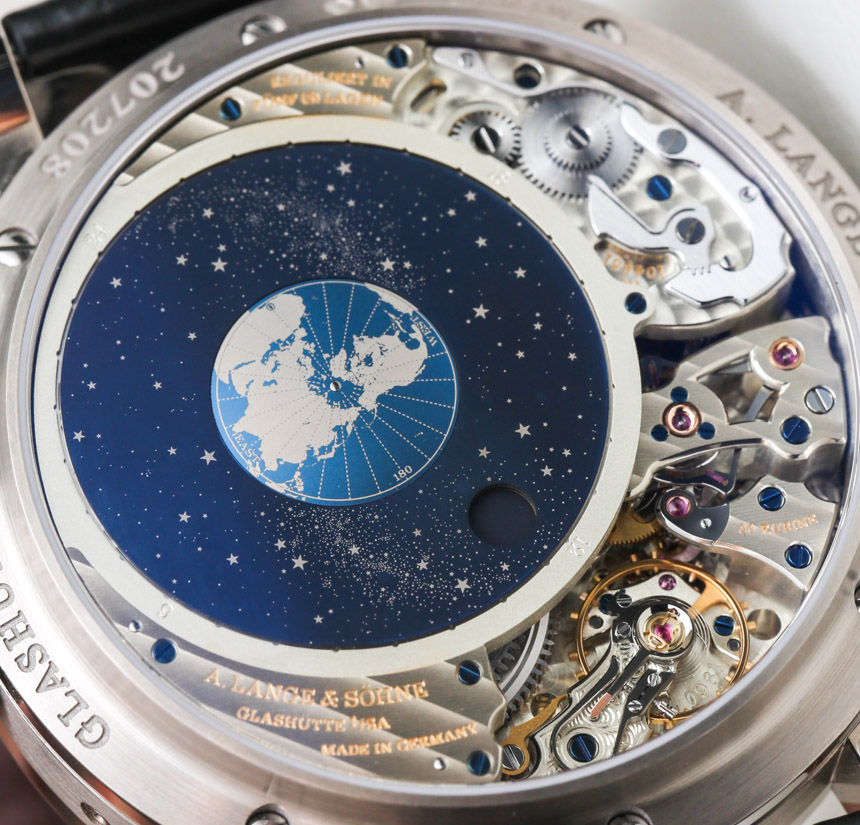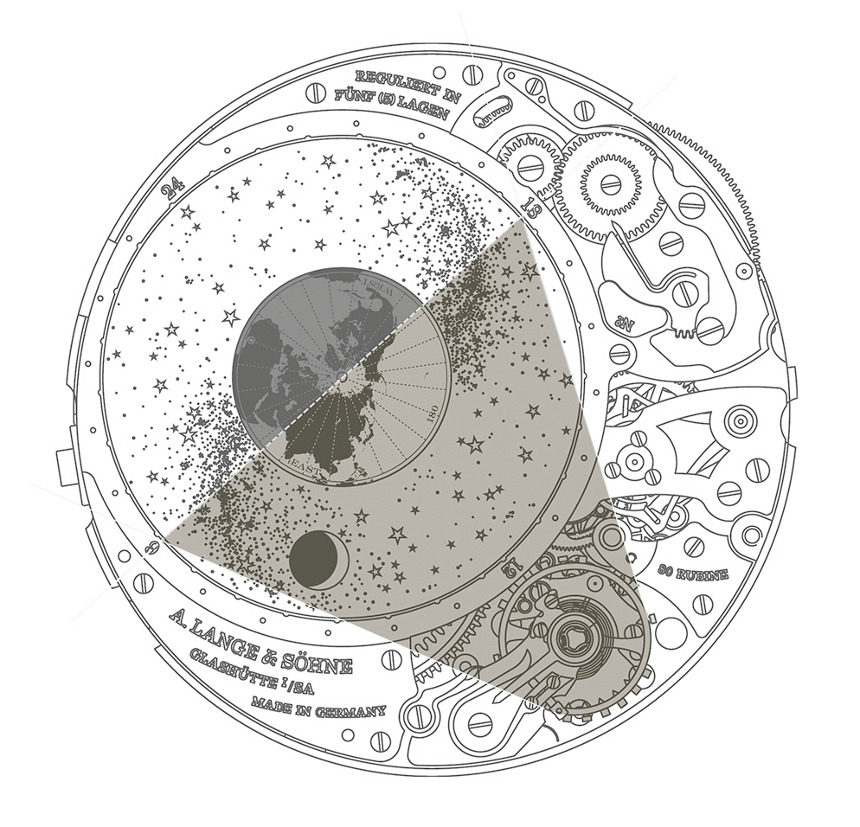
Since its resurrection during the early nineties, A. Lange & Söhne has turned into one of the world’s finest and most sophisticated manufactures – a position it fails to lose, no matter how economic crises or ever-changing trends affect the industry. As grandiose as that sounds, Lange has always represented the more relaxed end of the market, remaining consistently “German” with calm and collected novelties, bringing forward the brand and its most famous collections by one small step at a time. But sometimes there is more than one small step that has to be made, and the Richard Lange “Terraluna” tells us that the brand is picking up the pace.
Although Lange had been broadly appreciated among those who managed to delve into the greater depth of fine watch making, in general the brand has likely reached a narrower audience than some of its competitors. Creating highly, or rather, amazingly complicated novelties remain an evergreen solution to this issue, something they start to understand and more frequently implement at the German brand. More recently they have stirred up the standing waters with the Lange 1 Handwerkskunst, the Richard Lange Tourbillon “Pour le Merite” and now, with their novelty for 2014, the brand keeps raising the bar. The piece in question is no other than what has to be one of the show-stoppers of this year’s SIHH: the all-new Richard Lange Perpetual Calendar Terraluna. Ariel had some hands-on time with this highly complicated piece, built around one of the more “poetic” complications that horology has to offer.
 [youtube.com/watch?v=CRAQ_k-n4TQ&w=730&h=411]
[youtube.com/watch?v=CRAQ_k-n4TQ&w=730&h=411]
Moon phase indication is among the most famous, and most frequently re-interpreted features in the elusive group of poetic complications – and it just happens to be where the Terraluna truly excels. Exposed at the back of the 45.5 millimeter pink or white gold case, the orbital moon phase display shows the location of the moon relative to the earth and the sun – something Lange claims to be a world first in a wristwatch. Looking at this heavenly map of the skies one can quickly spot the earth and the moon, but the sun just seems to be missing from the equation. Well, that is because the sun is represented by the balance wheel – a truly ingenious idea to say the least!

Now, the positions of these celestial bodies are indicated by three rotating discs, all done in solid white gold and coated blue with a special, patented technique that’s unique to Lange. In the centre of the display is a disc depicting the earth and its Northern hemisphere, rotating counter-clockwise around its axis once per day. Surrounding it is the star-studded celestial disc which also rotates counter-clockwise, once every 29.5 days. It shows 2160 stars, all cut with a laser-beam, revealing the gold under the deep blue coating.

Illustrating the balance wheel’s role as the sun, highlighting the sunlit areas on the case back’s celestial display
Along with this star-disc moves the moon, meaning that upon looking at the display one can tell the moon’s relative position to the sun and earth. Consequently, it is a new moon when the moon is “between” the earth and the sun, and as it rotates counter-clockwise it goes from waxing to full and then to waning moon – as pictured below. What is more is that there is a fixed 24-hour ring around the periphery of the star-disc, serving as a day and night indicator: as the earth disc rotates away from the “sun” – the balance wheel – one can easily read on which part of the Northern hemisphere is it day, or night.

